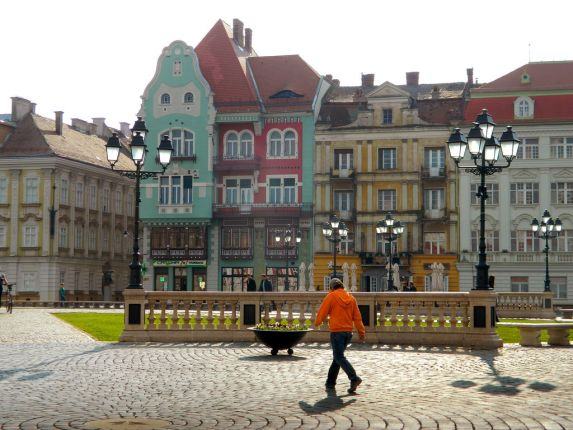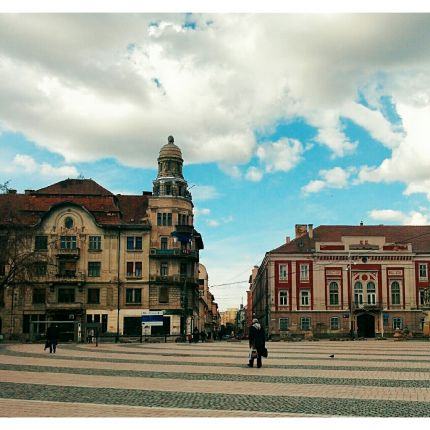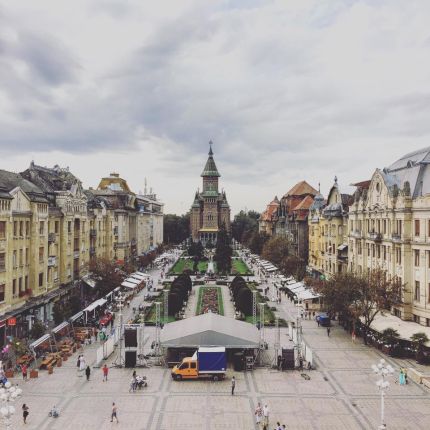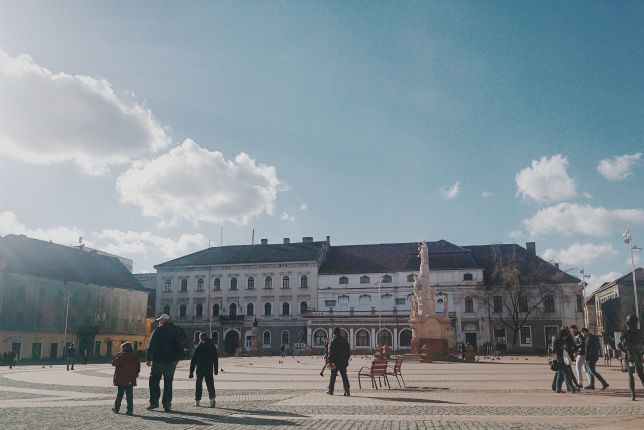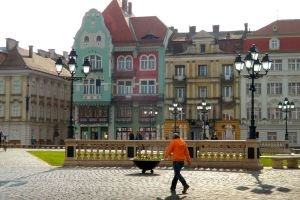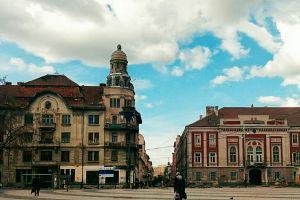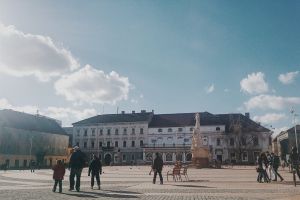
Tours & Day Trips in Timisoara
Timisoara is the 3rd largest city in Romania and one of the most interesting, vibrant and culturally active - it has been chosen the European Capital of Culture in 2023! Being on the Western border of Romania, locals here have always been more rebellious and open-minded. This is why Timisoara is first place where the communist uprising in 1989 started.
Why visit Timisoara? The city is bustling with students, a diverse ethnic scene, restored historic glory and many more! Timisoara airport is very well connected and the city is close to important tourist attractions in Romania such as the Danube Gorge, Corvin Castle and Retezat Mountains. Be sure to check our guide on what to do in Timisoara made by locals to get a better idea of what to see & do in the city!
Have a look at all the tours you can do in Timisoara, handpicked by us:
Tour type:
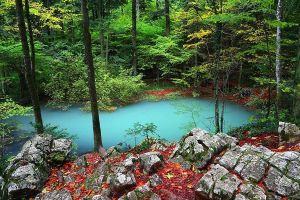
Magical Hike in Nera-Beusnita National Park to Ochiul Beiului Lake
Start from: Timisoara
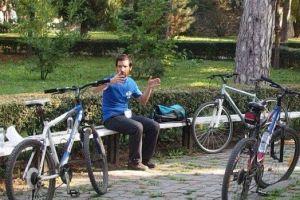
Timisoara on Bike - the full city experience!
Start from: Timisoara
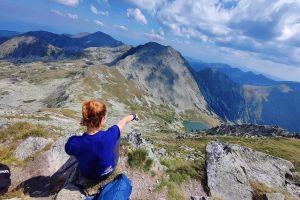
1 or 2 Day Hiking Trip in Retezat National Park
Start from: Timisoara
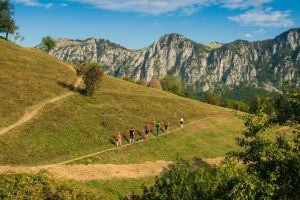
Hiking Tour from Timisoara to Remote Villages & Cernei Valley Natural Park
Start from: Timisoara
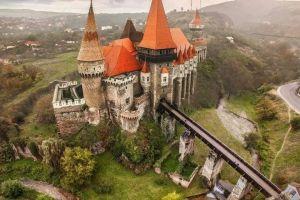
Corvin Castle and the Mystic Dacian Ruins at Sarmisegetusza
Start from: Timisoara
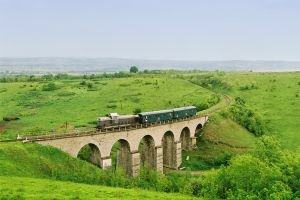
Hotspots around Timisoara: Bigar Waterfall & Oravita-Anina Steam Train
Start from: Timisoara
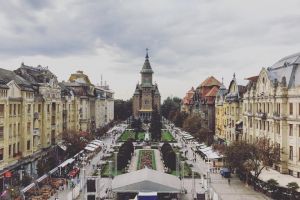
Walking Tour of Timisoara [2023 European Capital of Culture]
Start from: Timisoara
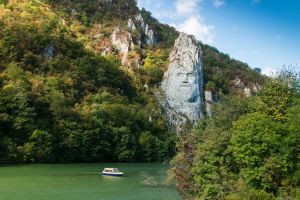
Timisoara Day trip to Danube Gorge & King Decebal Statue
Start from: Timisoara
Reviews about Tours & Day Trips in Timisoara

We could not have asked for a better tour or guide (Mark-Alex) He was super knowledgeable and passionate about Romania and the Danube Gorge. Great communication and response time before the tour answering any questions we had. Highly recommend to any visiting Romania, booking was very simple.

our guide was Sergiu and this trip was really nice. we were looking for a day out to do some light walking in nature and he took us to some great places in the national park. he was very friendly and made sure everyone was taken care of. the trails in the forest was beautiful, the air so fresh and clean, and the lake a wonderful serene sight. and we also learned so much about Romanian history!

Perfect tour with Alex, giving detailed and sophisticated explanations, always surprising and good transitions to the next topic :-) Highly recommended

I had decided on visiting Timisoara this year because it was the European Capital of Culture. While planning this visit I decided that I wanted to experience some of the natural scenery present in the Banat area of Romania in the vicinity of Timisoara. So I chose 2 Romanian Friend tours to do this, one of these being the tour Magical Hike in Nera-Beusnita National Park. I went on the this tour on a very nice weather Saturday with Liviu, my Romanian Friend guide. Liviu was a great person to take this tour with, as he was very friendly and helpful and loves the outdoors. So we had a very pleasant day together doing several hikes in the National Park. We had very good conversation during the day and Liviu answered the questions that I had, we discussed other places in Romania that I had previously visited and the present state of the environment in Romania. We began the day with a 2 hour drive from Timisoara to Nera-Beusnita National Park, including a short stop for breakfast just outside of Oravita. When we reached the National Park, we began our first hike to reach the beautiful small lake called the Eye of the Bey. This hike was quite easy, with mostly flat terrain and took about 45 minutes to arrive at the lake. The lake being quite scenic, we spent some time there enjoying the atmosphere. We then continued our hike for another half-hour to arrive at the waterfall location. This location was also quite scenic, but due to the time of the year (late summer), there was very little water going over the falls and I had to imagine what it might be like during the spring of the year, which Liviu explained was the best time of the year to see real waterfall views here. But it was still a nice hike to get to the falls. We then retraced our steps from the falls back to the Eye of the Bey lake and to the beginning of the trail, where we were able to view a local fish hatchery close to the trail. We then drove a short distance to the Sasca Romana (Roman tunnels), believed to have been present since Roman times in this area, to explore them for a bit. Our hikes were now completed, but Liviu took a slightly different route back to Timisoara and I got to see several small villages in the area, Socolari and Iliada. I particularly enjoyed seeing the local houses and architecture in these villages and was told that while these villages are not presently as active as they once were, new activity is occuring in them because Romanians and foreigners are purchasing houses and properties and renovating them as vacation homes or cultural landmarks. This was encouraging to see. All in all, it was a great day in the rural Banat region and Liviu was a great guide to share the journey with.
Best Things to Do and Day Trips in Timisoara
Timisoara is the third-largest city in Romania and an important cultural and economic hub. The city, which is also known as “Little Vienna” is the 2023 European Capital of Culture and for good reason: it boasts an eclectic cultural scene, terraces and cafes that can satisfy any taste, noteworthy landmarks and a wide-variety of entertaining activities. Go on a guided walking tour of Timisoara and you'll quickly see why!
One of Romania's major cities, the name originates from the river that passes through it, Bega, which was originally called Little Timis (Micul Timis). The Romanian word Timisoara and the German Temeschwar both stem from the Hungarian “Temesvár” which means castle (vár) on the river Timis (Temes). In fact, the city’s excellent academic institutions have attracted over 60,000 students from 50 different countries. The medical schools in particular appeal to a lot of international students.
But in order to understand how this city located in the western Romania reached its unique status in the country and why it should be your next stop, you need to know a few details about its rich history.
History of Timisoara
Historical evidence shows that this city was inhabited since ancient times but in the 13th century it was destroyed by Tatars and rebuilt during the reign of Charles I of Hungary when it also grew considerably. Stone walls were added to the fortress and he ordered the construction of a palace.
He had become king in 1307 but he was threatened by powerful enemies – mostly Hungarian nobles who didn’t think he should have the throne - so he moved the royal seat and administration from Buda to Temesvár between the years of 1315 and 1323.
This is where he resided during a period of intense conflict in which despite being coronated thrice, he was not acknowledged as king. In 1323, Charles had managed to take full possession of his kingdom and moved the capital to Visegrád, situated in the center.
The years he spent here allowed the town to expand and flourish and by the middle of the 14th century, Timisoara held an important strategic role in the struggle between Western Christianity and the Muslim Ottoman Turks. This city was attacked by Ottomans in 1462, 1476, 1491 and in 1522 it was finally conquered by Kara Ahmed Pasha with an army of 16,000. It then became a capital city in the region and stayed under Ottoman rule for almost 160 years. During this time, Timisoara was controlled by the sultan and had a special status similar to Budapest and Belgrade.
In 1716 it was conquered again by Prince Eugene of Savoy and came under Habsburg rule. Claudius Florimund Mercy was appointed governor and since the siege resulted in the city being burned down, it was rebuilt under his supervision. In 1723 a new stone fortress was erected and Timisoara continued to flourish. The inhabitants became more diverse as German, Italian and Spanish settlers were brought in. By 1781, Timisoara which was referred to Temeschburg became one of the most significant cities under the Habsburg Monarchy and was deemed a royal free city.
During the Austro-Turkish war of 1787-1791, it was captured in 1788 and looted in 1789.
As you may recall, the Revolutions of 1848 meant a threat to the Habsburg Empire which ruled over Austrians, Hungarians, Romanians, Slovenes, Czechs, Poles, Slovaks, Croats, Serbs, Ukranians and Italians. The Hungarian revolution was actually the longest in Europe and since Timisoara was under Habsburg rule it resulted in an unsuccessful siege of the city which lasted 114 days. Timisoara was even shortly the capital of the Serbian Vojvodina (autonomous Serbian province) as it was captured by Serbian Troops.
After the Austro-Hungarian Compromise of 1867, Timisoara became capital of Temes County and a period of modernization followed which included: introduction of telegraphy (1853), gas street lighting and a train line to Szeged (1857), horse-drawn trams (1867), electric street lights (first city in Europe, 1884) and electric trams (1899).
After World War I, Timisoara was given to the Kingdom of Romania through the Treaty of Trianon (4th of June 1920). During World War II, the city was damaged by bombing raids from both the Allies and the Axis powers since Romania fought on both sides at different stages of the war. The country lost much of the territory gained after WWI.
After World War II, Romania was occupied by the Soviet Union, King Michael was forced to abdicate and the People's Republic of Romania was proclaimed. Timisoara went through a period of Sovietization and Systematization, became highly industrialized and the population tripled.
The blend of diverse cultures still permeates Timisoara, serving as a testament to its impressive history. Today, when you take a leisurely stroll in Union Square, located in the heart of the city, you will hear locals conversing in various languages. This delightful mixture of cultures is an integral part of Timisoara's charm. And the local people are very welcoming. You'll likely have the opportunity to connect with a wonderful person in Timisoara, forming a lasting friendship.
But this isn’t why this great city holds such an important significance for Romanians.
In December of 1989 the Romanian Anticommunist Revolution started in Timisoara initially as a reaction to the government trying to evict Hungarian pastor László Tőkés who had spoken against the regime’s Systematization policy earlier that year. Parishioners gathered around his house to prevent the eviction but this attracted passers-by who were already disgruntled with the austerity measures imposed by Ceausescu and had heard of similar events in the neighboring countries.
The attempt at crushing the revolt by involving the army only made it gain strength and after three days of bloodshed, Timisoara became the first city to free itself from the Communist regime.
During this time, Ceausescu was in Iran and he returned on the 20th of December. On the 21st, he decided to give a speech in Bucharest, criticising the riots in Timisoara. This proved to be a huge mistake because the crowd gathered to hear his speech also started a protest and now the Revolution had spread to the capital. On a guided walking tour of Timisoara a guide can show you where these events happened and the few remaining bullet holes in buildings, serving as reminders of the Romanian revolution.
Timisoara, as the first place where the Revolution ignited, holds a crucial position in the modern history of Romania.
This is just a glimpse into Timisoara's complex history, intertwined with European history, which is why this city is more than just its beautiful places and main squares; it's also about a captivating way of life and its diverse people. A tour guide can provide a better understanding of everything Timisoara has to offer.
Architecture of Timisoara
Timisoara’s architecture serves as a reminder of important historical events that have left their mark on the city. One of the most important buildings is the Orthodox Cathedral which is part of the National Register of Historic Monuments and was built between 1936 and 1941 on an area of 1,542 square meters (16,600 square feet). It has 11 towers and reaches a height of 90 meters. The cupola is built in Moldavian Style which mixes Renaissance, Byzantine and Ottoman elements. The mosaic floors are inspired by rugs from the Banat region and the interior and exterior paintings were done by Anastase Demian over a stretch of many years since this coincided with WWII.
In Piata Unirii (Unirii Square) you’ll find St. George's Cathedral, a catholic dome-church built between 1736 and 1774. It was originally designed by Joseph Emanuel Fischer von Erlach from Vienna and is the most valuable example of Baroque architecture in Timisoara. The interiors incorporate Rococo elements and were created by Viennese artists. Because of the cathedral’s great acoustic, numerous organ concerts are held here.
Timisoara has four theatres: "Mihai Eminescu" National Theatre, German State Theatre, Csiky Gergely Hungarian State Theatre and Merlin Puppet Theatre. All of them are housed in beautiful, impressive old buildings worth visiting!
Some of the city’s museums are also located in landmark buildings. The Art Museum is in the Baroque Palace, the Banat Museum in the Huniade Castle (Timisoara’s oldest building), the Palace of the Serbian Episcopacy houses a museum of religious artifacts on the first floor and you’ll find plenty of other art galleries if you take a full day trip with a local guide. Moreover, if you are passionate about communism and its impact on Romania and Eastern Europe, then a visit to the Communist Consumer Museum is a must.
The styles of Art Nouveau in Timisoara are diverse, providing architecture enthusiasts with a sanctuary of impressive buildings, each with its own complex history and intriguing stories. That’s why Timisoara can also be considered a great place for a city break!
Here are some of Timisoara’s main attractions you should visit. This short list can serve you as a concise Timisoara travel guide:
- Unirii Square
This is where you’ll find the Catholic Cathedral (St. George's Cathedral), the Serbian Orthodox Cathedral and the Baroque Palace. This should be your first stop while in Timisoara.
- Piata Victoriei (Victory Square)
Known as Opera Square until 1990, this is where Timisoara was proclaimed the first free city on the 20th of December 1989. It’s very close to Unirii Square and you’ll be able to see three of the four theaters, the Romanian National Opera which shares the same building with the "Mihai Eminescu" National Theatre and lots of other art galleries and interesting boutiques. A visit of Victory Square (or Operei Square, if you prefer the old name) is a perfect place for a stroll and a good time.
- Liberty Square
This is the second-oldest square within the former fortress of Timisoara. Here, you can discover the Military Museum (one of the oldest buildings in Timisoara), the Romanian Revolution Museum, and the Old City Hall building. Its name dates back to the Hungarian Revolution of 1848–1849 when the city withstood a siege by Hungarian revolutionaries.
In this lovely place, you can find a tourist tram that offers tours of the Old Center, which is surrounded by parks. The Roses Park and Central Park are the most popular ones. Alternatively, you can visit all these three large pedestrianized squares by simply taking a stroll down Alba Iulia Street, a great starting place for a full day tour.
Traveling to this beautiful city is incredibly convenient, thanks to its international airport. Timisoara Airport, fully known as Traian Vuia International Airport, is situated just a little over 11 kilometers from the city center, and it offers flights operated by companies like WizzAir, Lufthansa, Ryanair, and Tarom. From the airport, you can opt for a private transfer to the city center for around 10 euros.
If you're coming from Vienna, Budapest, or Belgrade, another great way to get to Timisoara is by train, thanks to its proximity to Central Europe. The best part is that the train station is located in the city centre.
Other things to Do in Timisoara
The best time to visit Timisoara is in the summer, as you can enjoy various events in this vibrant city. The warm weather allows for more extensive exploration of its attractions, including the opportunity to go on a scenic hike near the city.
- Boat trip on Bega river
This 10 km boat ride is actually part of the public transportation system and the price of the ticket reflects it. It’s one of the best things you can do to relax and take in the scenery after a few hours of roaming through the city and visiting architectural landmarks.
- Craft Beer Festival
This festival takes place in June and it celebrates the growing artisanal beer industry in the region, so if you’re interested in exploring some unique beer flavors (Hop Hooligans, Zăganu, Sikaru, Nemțeana, Berărescu etc.), trying some local street food and listening to live music, you might want to stop by.
- Timisoara Jazz Festival
There are two other jazz festivals throughout the year, each lasting several days and you can listen to a mix of bands from all over the world at different venues
- Plai Festival
Plai means land and this festival is meant to promote civic action and local NGOs. If you decide to attend, you’ll get to listen to live music, try local food, participate in a wide array of workshops and really experience the spirit of the city, particularly how urban culture mixes with folklore.
Day trips and attractions around Timisoara
Timisoara isn’t lacking in places to see and things to do but it would be a shame to not take the time and explore some of the tourist attractions located nearby. You can book day trips from Timisoara with local guides and visit some of the most amazing places around the city, especially if it’s your first time in Romania.
- Corvin Castle
One of the best places you should visit while in Timisoara is the Corvin Castle. This medieval castle is about 200km (125 miles) away from Timisoara depending on which route you take. You might have seen parts of it in the horror movie “The Nun” where it’s presented as the Carta Monastery. The Carta Monastery is a real place in Romania, it’s just not where the movie was filmed.
Another departure from reality is that Corvin Castle is designed to look more like a fairy tale castle with multicolored roofs, a myriad of windows and balconies, strong walls, tall towers and an inner courtyard.
This imposing Gothic Castle is, in fact, among the largest in Europe and was built over an older fortification in 1446 under the orders of John Hunyadi (Iancu de Hunedoara). It was one of his most important properties and his intentions were to create an opulent home where he could hold ceremonies, formal receptions and feasts.
In the 17th century, further changes were made for both military and aesthetic purposes. In 1854, lightning caused a fire which burned most of the parts of the structure made from wood (roof, stairs, wooden beams, doors). This was followed by 10 years of neglect, so the current appearance of the castle is the result of a 40-year restoration process.
To visit Corvin Castle, you will need to cover the entrance fee of 40 lei for adults at your own expense.
- the UNESCO Ruins of Dacian Fortresses
There are six Dacian fortresses in the Orastie Mountains which were built in the 1st century B.C to protect the capital Sarmizegetusa, against the threat of Roman conquest. They make use of the natural landscape, forming an intricate defense system. These fortresses played a critical role in the Roman-Dacian wars.
If you’re interested in history, you can take a full-day trip from Timisoara and visit the remains of these remarkable structures. They showcase ancient architectural techniques and military innovation.
- Sarmizegetusa Regia
Sarmizegetusa Regia was the capital of the Dacian Kingdom and you might confuse it with Ulpia Traiana Sarmizegetusa which isn’t far (40km). Your local guide will probably take you to both places. What happened was that the Romans destroyed the original Sarmizegetusa and added the name to a new city which was to become the capital of the Roman province of Dacia. As with the other Dacian fortresses, you can visit the ruins.
The archeological site is located in the village Grădiștea Muncelului, at a height of 1,200 meters for strategic reasons as this gave it visibility over the surrounding regions in case of an attack.
It’s made out of three main areas: the citadel, a zone for temples and sanctuaries and the civilian settlements situated below the citadel on artificial terraces.
Hiking trips from Timisoara
Sarmizegetusa Regia is really close to the Gradistea Muncelului-Cioclovina Nature Park, a protected area with stunning scenery, wild nature, and five hiking trails for tourists. One of the most beautiful and also the most popular is the trail from Sarmizegetusa Regia to the Godeanu Peak. The isolation and wilderness of the landscape will make you feel like you’re in a sort of wonderland. This area can provide a great time for tourists interested in outdoor activities.
Another popular hiking day trip from Timisoara is to Nera-Beusnita Natural Park where the Beusnita Waterfalls can be admired and also the famous Ochiul Beiului Lake (Devil's Eye) with is interesting crystal-clear turquoise water. The Nera Gorges offer a multitude of natural attractions, including caves, waterfalls, crystal-clear lakes with incredible colors, serene rivers, rugged cliffs, and lush glades, making it a great destination for nature lovers.
Bigar Waterfall is a famous attraction around Timisoara and a must see on a day trip. In 2021, part of the Bigar waterfall collapsed, but a visit here is still a good idea because the area's beauty can captivate any tourist.
Finally, the statue of King Decebal on the Danube is so popular it needs no introduction. What's more, reaching this colossal sculpture allows you to enjoy a scenic drive along the beautiful Danube Gorge. And if you want to see this beautiful landscape from above, a quick hike to Ciucaru Mare Peak will make your day.
If you're fascinated by the majestic Danube River, Romania offers an ideal opportunity to immerse yourself in its beauty. During your next visit, don't miss the chance to explore the Old Danube, nestled within the Danube meadow. This pristine haven is a vital migration corridor, providing sanctuary for numerous IUCN Red Listed bird species, making it a must-see destination for nature enthusiasts.
After seeing the statue, and if you have some free time to spare, consider going on a hike in the nearby Domogled-Cernei Natural Park. Cerna Valley is known for its beautiful mountains, stunning waterfalls, and the town of Baile Herculane, where you can experience some thermal baths.
Without a doubt, the most popular region in Romania is Transylvania, especially due to the legends that surround it, and the legend of Count Dracula holds a place of honor. However, Romania has more to offer, and Timisoara, located outside the southwestern part of Transylvania, is clear proof of the natural and cultural riches that Romania has to offer. After a visit to Timisoara, you might start planning your return trip to this beautiful country.

 10 REVIEWS
10 REVIEWS

